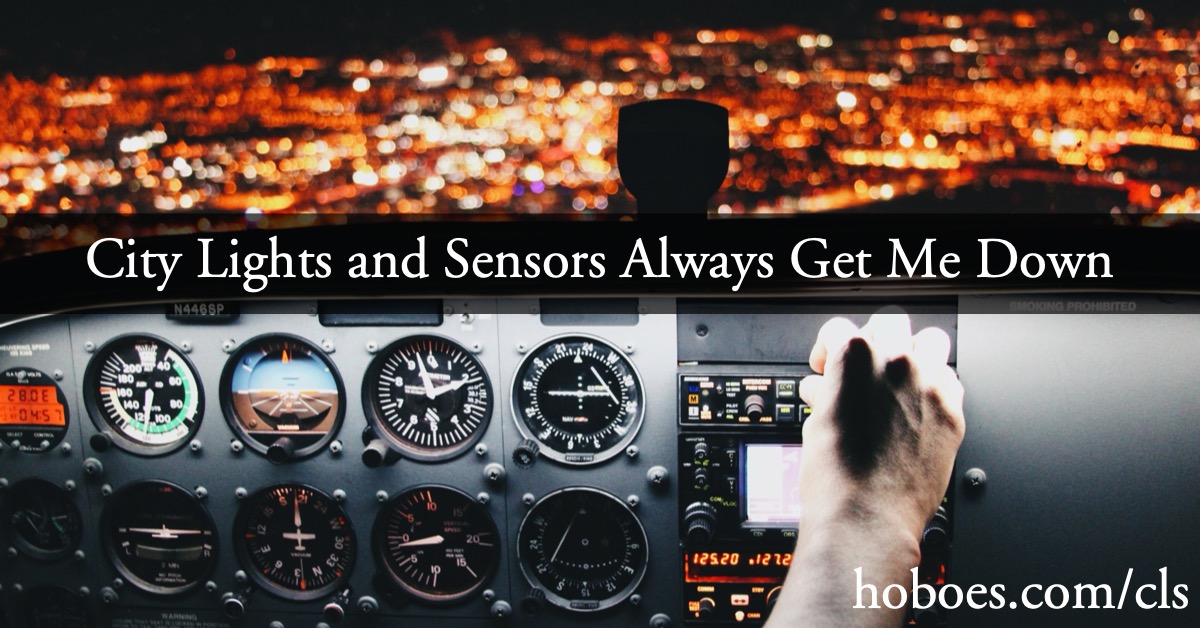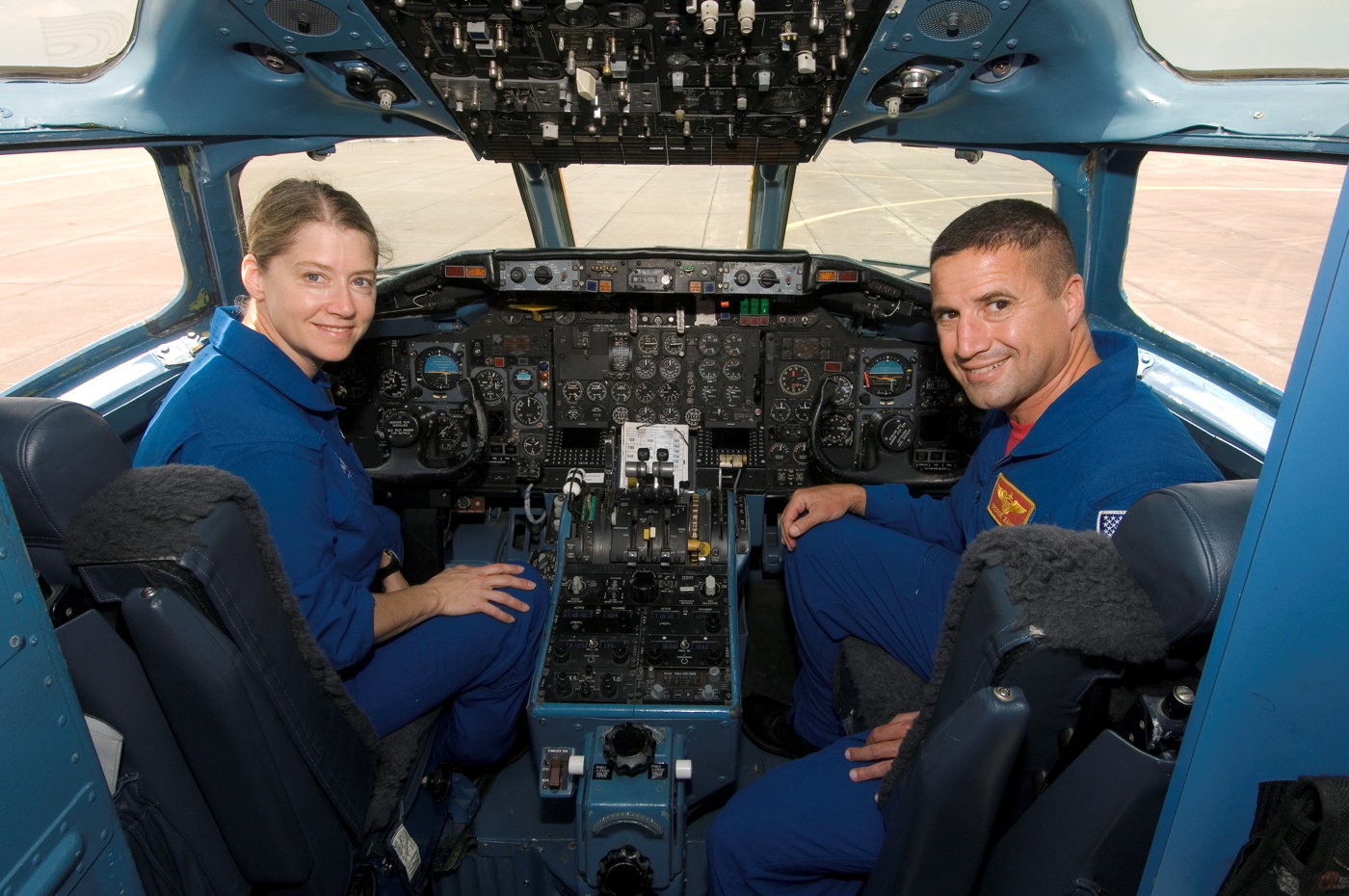City Lights and Sensors Always Get Me Down

News of the DC helicopter-airliner crash came literally the day I put Italian road safety to bed. By following the forty eight hour rule into forty-eight days plus, I’m able to choose the most interesting of the hot takes, some of which are very relevant to our current policy of adding complexity wherever we see safety issues.
Because what became clear immediately and continued to be clear was the complete lack of surprise from pilots who fly that airport. It was incredible reading about the problems pilots have long complained about at Reagan National in light of the perspective and distraction problems that I covered when talking about pedestrians, cyclists, and motorists.
These complaints by pilots may well not be the reason the helicopter and passenger jet collided; that story seems to get weirder by the week. But they point to an ongoing problem that will only get worse in the air and on the ground until and unless we take it seriously. For a particularly well-written example of what I’ve been seeing, here’s commercial pilot Chris Palmer:
What I think happened in this case:
In this case air traffic control calls out to the helicopter and ask them if they see the regional jet. In this case, they called them an RJ, for shorthand.
The helicopter confirms that they see the RJ and will pass behind as instructed.
But human error, being a main cause, it’s highly likely that the helicopter crew saw the departing regional jet, which can also be seen in this video, with this landing light climbing up from the runway.
Misidentifying this aircraft that was further to the right or starboard of the helicopter, they indeed thought they were passing behind that regional jet with plenty of room to spare.
What they didn’t know, with their eyes turned to the right, was that there was an aircraft approaching them from the left. The one that they were actually supposed to be looking for.
To the airliner, and to any aircraft on a collision course, they can often be impossible to see. Especially considering this was at night, and at low altitude, the anti-collision lights on the helicopter could have easily been lost in the bright lights of the city in the background of the helicopter from the airliners perspective.
This has apparently been an ongoing complaint about Reagan National’s proximity to DC: the city’s lights make it very difficult for pilots to quickly and accurately assess which lights in the sky they need to worry about.
Former helicopter pilot and retired Marine colonel William Dunn made a different but related point on Tipping Point the day after the tragedy: Air Traffic Control in DC doesn’t always use clear language. There were multiple planes in the airspace that matched the description the helicopter pilot was asked to identify and avoid. The helicopter pilot may well have been avoiding an entirely different aircraft than the one they hit.
One of the things I learned from this tragedy is that the opposite rules apply for aircraft as for pedestrians and bicyclists. It is not the bigger, heavier aircraft that is expected to avoid the smaller, more maneuverable aircraft. Rather, it is always the more maneuverable vehicle’s responsibility to avoid the less maneuverable vehicle. In a situation like this it’s pretty obvious why: because the smaller one can and the larger one cannot. My understanding is that this is also true on the water.
People complaining about how safety campaigns blame the pedestrian and cyclist forget this: that semi coming down the road may be legally responsible for not hitting you. But if you walk in front of it or cut in front of it with your bicycle or automobile, it is not going to be able to stop.

Welcome to next year’s automobile dashboard.
Further, as I wrote in the Italian safety campaign backlash post, you cannot assume that the other vehicle’s driver even has the same perspective as you. We tend to be very egocentric when guessing other people’s perspectives. We are paying attention to us, so they must be paying attention to us. But they may be focused on avoiding an entirely different pedestrian, cyclist, or vehicle. They may even be identifying an unimportant flashing light, buzzing noise, or sudden movement as important. It may be just for a second, but that faster moving vehicle can go a long way in just a second.
There is a universal safety mindset, as applicable to bicycles and pedestrians as it is to helicopter pilots and air traffic controllers, that appears to be regularly broken at Reagan National. You plan both to avoid misunderstandings and to mitigate the dangers of any misunderstanding.1 And one way you don’t avoid misunderstandings is with too much input.
Pilots have long warned of a “nightmare scenario” near the airport with commercial jetliners and military helicopters crossing paths, especially at night when the bright lights of the city can make seeing oncoming aircraft more difficult.
An airline cockpit is complicated enough without adding even more distracting elements like city lights or more warning noises. Modern automobile dashboards are sadly beginning to emulate that aspect of flying. Every potential danger must be “mitigated” by adding lights, buzzers, and even forcing the steering wheel in the wrong direction.
As it happened, about a week after writing that post I rented a 2023 Camry to drive from Texas to San Diego. The Camry has lane guidance on the dashboard that distracted me every time I tried to enter an on-ramp or pass a semi. It really didn’t like that I give semis a wide berth on windy west Texas highways. It even “augmented” its buzzes and lights by stiffening the steering wheel, requiring me to devote cognitive resources to correcting the wheel during moments when I’d much rather devote all of my attention to merging with traffic at speed or completing a long pass.
All users of a roadway need to be aware that other users may be distracted by other users of the road and by features of their vehicle. We need to demand simpler vehicles, not vehicles whose very safety features are a distraction. Il Post was worried that saving lives might undermine the attempt to add more sensors to vehicles. I’m personally more worried that adding more sensors will undermine the ability of humans to drive safely. Every extra sensor is an extra light to watch rather than watch the road, or an extra audible warning to distract from watching the road.
The other point of my previous post was that social media makes everything worse, and that was demonstrably true on January 29. Within minutes you had two camps, one saying it looked like the helicopter aimed itself directly at the jet. This was a terrorist attack! And the other saying Trump—who only took office nine days earlier—bore responsibility because he fired the head of the TSA, an agency that has nothing to do with air traffic control.
The former camp, to their credit, mostly kept to themselves, starting their own threads and trading wild speculation among themselves.
But the latter camp was far different. They literally started spamming, online and within minutes, people who were concerned only with survivors and relatives. Threads on X expressing hope and those expressing despair were both flooded with nasty non sequiters gleefully bathing in the blood of the dead passengers.
It was a targeted example of social media making a tragedy worse and doing its best to ensure future tragedies aren’t avoided.
In response to A one-hundred-percent rule for traffic laws: Laws should be set at the point at which we are willing and able to jail 100% of offenders. We should not make laws we are unwilling to enforce, nor where we encourage lawbreaking.
You also plan to avoid accidents and to mitigate the dangers of any accidents. This is why airliners take off and land over water or other empty space when possible
↑
- Black Hawk had key safety system turned off during deadly DC crash, senator says at The New York Post
- “‘This was a training mission, so there was no compelling national security reason for ADS-B to be turned off,’ Cruz said after a briefing from the National Transportation Safety Board and Federal Aviation Administration… ADS-B is an advanced surveillance technology to track aircraft locations.”
- Black Hawk helicopter’s altimeter may have been inaccurate, pilots may have missed some calls from control tower: Pete Muntean, Alexandra Skores, and Dalla Faheid at CNN
- “A preliminary analysis of the flight data and voice recorder on board a Black Hawk helicopter leading up to the collision with a commercial flight over Washington, DC, on January 29, indicated the helicopter’s altimeter may have been inaccurate and the pilots may not have heard some calls from the Reagan National Airport control tower, officials said.”
- Italian road safety campaign social media backfire
- In a perfect universe, defensive driving would be unnecessary. Too much on social media, any good idea for saving lives is denigrated because it helps people rather than laying blame.
- On the DC midair accident: Chris Palmer at @ChristheAV8R
- “I’m a certificated commercial pilot and accredited master flight instructor, here’s my take.”
- Pilots have long worried about DC’s complex airspace contributing to a catastrophe: Ryan J. Foley, Jim Mustian, and Michael Biesecker at Yahoo! News Full Coverage
- “Feller was unable to pick out the oncoming jetliner against the lights of the city and cars on a nearby bridge. He immediately descended, skimming just 50 feet over the water to ensure the descending jetliner would pass over him.”
- When the Planes Fall from the Skies…: Mark Steyn at Steyn Online
- “Not so long ago, we used to know a thing or two about functioning societies: ailing dictators, going back to Stalin, find it hard to get treatment from competent doctors because their medical systems prioritise regime loyalty. And here we are in 2025, having adopted for almost every industry a modish variant of the Stalin model.”
More traffic safety
- Italian road safety campaign social media backfire
- In a perfect universe, defensive driving would be unnecessary. Too much on social media, any good idea for saving lives is denigrated because it helps people rather than laying blame.
